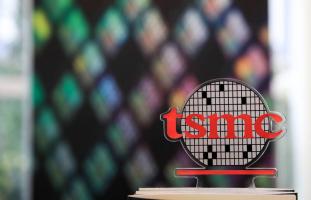※ 本文為 yhvhyod.bbs. 轉寄自 ptt.cc 更新時間: 2020-09-08 13:11:57
看板 Gossiping
作者 標題 [爆卦] 研究證明人心是被病毒搞大的
時間 Mon Sep 7 12:02:37 2020
https://www.cell.com/developmental-cell/fulltext/S1534-5807(20)30580-3
https://imgur.com/8kQMuqH
![[圖]](https://i4.disp.cc/imgur/8kQMuqH.jpg)
定序編碼原文節錄,中文部分請至頁底。
Gene Editing of hESCs (BANCR Exons)
Primer name Sequence Note
BANCRexon123_5’F_CRISPR ATAACCATAAGTATCAACAG BANCR exon 123 KO 5’CRISPR
BANCRexon123_5’R_CRISPR CTGTTGATACTTATGGTTAT BANCR exon 123 KO 5’
CRISPR
BANCRexon123_3’F_CRISPR AAGAAGACTTACCATGAACT BANCR exon 123 KO 3’
CRISPR
BANCRexon123_3’R_CRISPR AGTTCATGGTAAGTCTTCTT BANCR exon 123 KO 3’
CRISPR
BANCRexon4_5’F_CRISPR AGAAATGTGCACAGTAAAAC BANCR exon 4 KO 5’ CRISPR
BANCRexon4_5’R_CRISPR GTTTTACTGTGCACATTTCT BANCR exon 4 KO 5’ CRISPR
BANCRexon4_3’F_CRISPR GCTGAAACCAAAGTAGACAA BANCR exon 4 KO 3’ CRISPR
BANCRexon4_3’R_CRISPR TTGTCTACTTTGGTTTCAGC BANCR exon 4 KO 3’ CRISPR
BANCR_EcoRI_exon4_F GGGGGAATTCCTGCTGAGAAGTTCAGAGTCAA exon4
overexpression plasmids F primer
BANCR_NotI_R GGGGGCGGCCGCGGATCCGATTTAAATT exon4 overexpression plasmids
R primer
CRISPR_31F AAGAAGCCAGCCTAAACCC Verify CRISPR 31 clones
Enhancer Knockout Region (1,026 bp)
AGATATTCCCTTCCTCCACTCTGTCATGTTAATAGCCCACCTGGGGAAAATTCCAGAGCTAAAAAAGTAGCCAGGTGGCTCTTTTTTTGTTGTTGTTTTAAACAAAAGATCTCAAAGTGGGCCATATCGCCCATCTCATTGTTTGCTCCTTCCACATAAGTGCTAATGTGTTTGATTATATTCTGCTCCAAATTCCACTACAACCACTAATATAAGGCACATACAGAGAATTAACTGTGTCCAAACAGTTCTTTCCTCATGCCCTCATTCTTCTTGAATTTTAAATGCCTGTTGAACAGAAGCATTAGAGTGTTTATTTTCTGAAAACCTTCTGGAGAGCAATCACCTTGTCTTTTCAAAGAAGCCATACTGTGTCTGGTTTTTCCATTCCAAAAATAACATAGAAATTCTTAGAGACAGTCATGTGGCAGAGAACCAAGAGCTGGAATGCAAAGCTTTTGTGTTTCTTGTGGAAGGCCTCTTGAGTACTTAAGTAGTTACATTCCAGCT
TCACAGGGAAGCTGAAGAGGGGCAAATGCAGTAAGGAGAGTACTTGAGGCAGGCCTGGTATTTCTCTTCCATGAAATGCCAAGTTTGGTCATGTCCTGGAGAAGTTAGGGTGCCCCACAAGAGGTGTTGGTACCGCTGTAGTCTGTGAGGCTACCTGAAGGGAGACCACGTCTTCCGAGAAATCTAATCACCAGCTGCCTACAACTTCCCCAAACACCCACCTGAACACTGTTTTACTCCTGACCACCCTCACTCTGCAGAATCACATGACAGCCCAACATTGTTACTTCACCTAGTGGCAAGTATGCACATCAATTTTTTCCATTCCCTTTCCTACCGTAGTCTTTCtgtcagagatgtttgaaccagagcaactccatctcgaataagaactgggtaaaataaggctgagacctactgggctgcatttccaggaggttaggcattctaagtcacaggatgagatagaaggtcggcacaagatataggtcacaaaggccttgctgataa
aatagcBANCR originated in ancestral marmosets and has subsequently been conserved
in all related primate lineages, including humans. Similar to human cells,
NHP iPSC-CMs actively express BANCR, suggesting that not only is this genomic
element conserved but so is its regulation and transcription. Surprisingly,
BANCR knockdown and over-expression affect cardiomyocyte migration, an
important phenotype in cardiac cells particularly during development.
The predominant molecular pathway appears to be TEAD/YAP signaling, which has
gained significant interest of late, in particular in the heart where its
activity has been shown to control organ size and regeneration (Heallen et
al., 2011; Totaro et al., 2018). Although it is currently unknown whether
Hippo signaling or mechanotransduction specifically induces TEAD/YAP binding
at BANCR’s enhancer, our results do suggest that BANCR is a downstream
effector of TEAD/YAP signaling in primates, and its co-regulation by TBX5
induces its cardiac-specific expression.
In line with known TEAD/YAP signaling downstream effects, BANCR knockin
murine embryos exhibit increased heart size compared with littermate
controls. These findings raise an intriguing question regarding the potential
for a relationship between fetal cardiomyocyte migration and cardiac size,
particularly since the latter requires increased cellular proliferation that
was not detected in our murine embryo experiments.
As discussed in the Results, this apparent discrepancy may be due to
technical issues in accurately quantifying proliferating cells in tissue
sections and may also be due to cellular proliferation occurring before the
time of embryo harvest (E16).
However, we also did not observe increased proliferation in in vitro
engineered BANCR cell lines (BKD and BOE) (Figure S2B), which argues against
a proliferative mechanism mediated directly by BANCR. In terms of heart
development, it is possible that the increased migratory potential of
BANCR-expressing fetal cardiomyocytes concomitantly stimulates cardiomyocyte
division in vivo through secondary mechanisms not seen in an artificial in
vitro environment in which cells are removed from their native context.
We do believe our findings raise the possibility of a connection between
cardiomyocyte migration and heart size that warrants follow-up investigation.
We also performed AAV BANCR gene therapy of infarcted rat hearts and found
that BANCR causes ventricular dilation.
These rat data underscore our findings that BANCR is highly expressed in
pediatric (but not adult) dilated cardiomyopathies, a devastating disease
that results in enlargement of the heart and is the most common cause of
heart transplants in children.
BANCR may, therefore, present a therapeutic molecular target in young
patients for whom heart transplant is the only curative therapy.
Given our findings of an
in vitro cardiomyocyte migratory phenotype that leads to an in vivo
dilatory/enlargement cardiac phenotype with BANCR expression, this study
presents a general argument for the utility of PSCs that should be
emphasized. With access to species- and disease-specific PSCs, it is now
possible to interrogate relatively pure differentiated cell populations in
vitro to yield insights into development and disease that may not make
immediate sense in the context of our historical understanding of these
processes. This is particularly true given that nearly all knowledge of human
heart development, particularly its genetic underpinnings, has been inferred
from rodent and zebrafish models. BANCR is one example of a primate-specific
genomic locus that, when studied in a context-appropriate primate cellular
model system, has yielded phenotypic results (migration) that would likely
have been missed if only rodent models were employed.
With regard to delineating a specific molecular mechanism, lncRNAs do present
significant technical challenges, particularly highly repetitive ones such as
BANCR that have endogenous retroviral origins and share sequence homology
with elements throughout the genome. These repeat sequences, which constitute
more than 70% of the BANCR transcript, prevented us from specifically and
sensitively targeting BANCR with oligonucleotides for pull-down assays that
could identify protein or DNA-binding moieties. Due to these technical
challenges, we are primarily left with indirect measures of BANCR effects on
cardiomyocytes, such as RNA-seq and ATAC-seq after knockdown, knockout, or
over-expression. These indirect measures consistently show perturbation of
pro-migratory biological pathways, such as integrin signaling, extracellular
matrix dynamics, collagen degradation, Rho GTPase signaling, etc. However,
because it is impossible to conclusively confirm a direct link between BANCR
and these pathways, we are reticent to make claims about the importance of
any one in particular. Importantly, we are confident in the TEAD/YAP
signaling pathway as a regulatory mechanism of BANCR expression, as there is
clear interaction between these factors and BANCR’s enhancer.
The
involvement of TEAD/YAP regulation is robust and makes sense in light of the
cardiomyocyte and heart phenotypes seen with BANCR expression and knockdown.
Interestingly, integrin signaling is highly significant in the YAP1 ChIP-seq
analysis of genes near to YAP1 peaks (that include the BANCR enhancer), which
we interpret to suggest that BANCR and YAP1 overlap in regulating this
important cytoskeleton-ECM pathway in cardiomyocytes.
In broad terms, BANCR emerged after an ancient primate viral infection led to
the creation of this non-coding gene with unique, and presumably necessary,
pro-migratory function in the developing primate heart. This potent
pro-migratory effect on fetal cardiomyocytes, under regulation by TBX5 and
TEAD/YAP signaling, emphasizes the ability of ERVs to rapidly invade host
genomes and create functional elements that can alter development, disease,
and possibly primate evolution (see Graphical Abstract). It is remarkable to
consider the series of molecular and evolutionary events necessary to
accomplish this feat, especially in light of the fact that a de novo gene
(BANCR) was created that took advantage of existing cis-regulatory machinery
to specifically affect cardiomyocyte development. Starting from a single
germline insertion, the primate MER41 LTR copy-and-pasted itself to cover
approximately 0.1% of the human genome over 40–65 million years of primate
evolution. Several of these LTR copies, either stochastic or carefully
orchestrated, inserted into a favorable locus that ultimately became useful
for primate heart development. In mammalian genomes, ERVs have previously
been shown to regulate the interferon (IFN) response, a branch of innate
immunity, via generation of distributed IFN-inducible enhancers (Chuong et
al., 2016). Overall, however, functional studies of TEs in primate-specific
organismal development and evolution are lacking.
In conclusion, functional studies of primate-specific TEs such as BANCR/MER41
have been lacking due to ineffective organismal models. Human and NHP PSCs
that model development and physiology in vitro, when combined with methods
for assessing gene expression, chromatin accessibility, and conformation,
have the potential to address many of the challenges in interrogating
primate- and human-specific genomes. We expect studies such as ours will
continue to elucidate how primate retroviral elements have fundamentally
shaped our origins and our health.
內源性逆轉錄病毒衍生的一種長鏈非編碼RNA序列,被稱為BANCR。
除了出現在某些癌症中,BANCR僅僅在人類等少數幾種大型靈長動物發育中的心肌細裡
活躍。
心肌細胞是難以再生的心臟細胞,它們的協調收縮導致了心臟跳動。而BANCR特別存在於
胎兒心肌細胞中這一事實表明,它對心臟發育十分重要。
「我們利用誘導多能幹細胞技術,研究了BANCR表達在人類、大猩猩、黑猩猩和獼猴的胚
胎心肌細胞中的影響,發現它會有助於發育中的心肌細胞進行遷移。」 Wilson博士說。
一些有趣的跡象表明,BANCR對心肌細胞遷移的作用會影響心臟大小。
胎心肌細胞中的影響,發現它會有助於發育中的心肌細胞進行遷移。」 Wilson博士說。
一些有趣的跡象表明,BANCR對心肌細胞遷移的作用會影響心臟大小。
齧齒類動物體內沒有BANCR。而研究人員在胚胎小鼠中人工導入BANCR以後,動物發育出的
心臟擁有大於正常尺寸的左心室。對大鼠心臟注射一種BANCR的病毒株,在特定實驗條
件下,同樣導致了心臟的擴張。這些結果進一步表明,BANCR具有促進心臟增大的作用。
此外,研究人員發現有一種叫擴張型心肌病的兒童罕見病,患者心臟異常大而且功能差,
表達的BANCR則高於正常水平。這種疾病可能危及生命。研究者謹慎地期望,他們的發現
或能應用於未來的可能療法。
此外,研究人員發現有一種叫擴張型心肌病的兒童罕見病,患者心臟異常大而且功能差,
表達的BANCR則高於正常水平。這種疾病可能危及生命。研究者謹慎地期望,他們的發現
或能應用於未來的可能療法。
「如今我們有一些證據表明,這種反轉錄病毒序列衝擊並影響了心臟的大小和功能。」
Wilson博士總結說,「我們看到,靈長類祖先身上發生了古老的病毒感染,後來所有攜帶
這些序列的靈長動物都有了更大的心臟。」
--
明空覺遍大悲遊舞力 極喜任運再化利群生 直指法性水晶摩尼寶 降伏四魔無礙南瞻境
南開麗日皓月諾布尊 覺夢妙圓九乘之巔頂 善巧直趣本初普賢王 究竟證悟虹霓蓮花生
大密竅訣廣遍情器眾 本願金剛歌舞盡虛空 三門金剛無別願融入 無死住世普利界無央
https://imgur.com/Ff4PZlj 新譯白教開宗三怙主 https://imgur.com/FrXTpZe
【初音ミク】般若心経ポップ /【Hatsune Miku】 Pop Heart Sutra
https://www.youtube.com/watch?v=DCzSNssXGWI
--
※ 發信站: 批踢踢實業坊(ptt.cc), 來自: 59.125.182.127 (臺灣)
※ 文章代碼(AID): #1VLR3cOg (Gossiping)
※ 文章網址: https://www.ptt.cc/bbs/Gossiping/M.1599451366.A.62A.html
※ 編輯: yhvhyod (59.125.182.127 臺灣), 09/07/2020 12:03:43
--
→ : 偽科學YT頻道又有新題材1F 09/07 12:04
推 : 先來推,不然別人以為我看不懂。2F 09/07 12:04
→ : GATATTCCCTTCCTCCACTCTGTCATGTTAATAGCCCACCTGGGGAAAAT3F 09/07 12:05
推 : 跟我想的差不多啊4F 09/07 12:07
推 : 樓下聽說你是甲甲 你怎麼想5F 09/07 12:08
推 : 問老高6F 09/07 12:09
推 : 原來投手心臟很大顆是指物理層面的7F 09/07 12:10
→ : 什麼時候會變身\8F 09/07 12:10
推 : 跟我想的差不多 樓下呢9F 09/07 12:10
噓 : 難怪尼哥這麼大10F 09/07 12:45
推 : 怎麼看到一堆01100101101101001111的感覺11F 09/07 13:19
→ : 心想要變大,心臟就變大惹12F 09/07 14:18
--
※ 看板: FW 文章推薦值: 0 目前人氣: 0 累積人氣: 105
作者 yhvhyod 的最新發文:
![]() 大概就下棋把妹開鋼彈這樣 宮崎駿復出!新電影上映日曝光 秘密打造5年「高層也不知劇情」 ▲宮崎駿(左圖)執導的全新動畫片《你想活出怎樣的人生?》確定將於明年7月上映, 今發行商東寶首度公開電影海報。( …49F 30推
大概就下棋把妹開鋼彈這樣 宮崎駿復出!新電影上映日曝光 秘密打造5年「高層也不知劇情」 ▲宮崎駿(左圖)執導的全新動畫片《你想活出怎樣的人生?》確定將於明年7月上映, 今發行商東寶首度公開電影海報。( …49F 30推![]() 龍邦拚了!持股泰山比重拉至46.92% 直逼5成 20:03 2022/12/05 工商 曾仁凱 龍邦拚了!為了搶下泰山(1218)經營權,5日公告透過旗下保勝投資,於11月29日至12 月5日短短一 …46F 32推
龍邦拚了!持股泰山比重拉至46.92% 直逼5成 20:03 2022/12/05 工商 曾仁凱 龍邦拚了!為了搶下泰山(1218)經營權,5日公告透過旗下保勝投資,於11月29日至12 月5日短短一 …46F 32推![]() 由8345名大學生票選出的排行榜 学情は12月2日、2024年卒学生対象「就職人気企業ランキング」を発表した。調査は4月 1日~10月31日、2024年卒業予定の全国の大学3年生、大学院1年生8,3 …46F 24推
由8345名大學生票選出的排行榜 学情は12月2日、2024年卒学生対象「就職人気企業ランキング」を発表した。調査は4月 1日~10月31日、2024年卒業予定の全国の大学3年生、大学院1年生8,3 …46F 24推![]() 愛之味獲利看俏 股價吸引買盤布局 2022-11-17 11:48 經濟日報/ 記者 黃淑惠 /台北即時報導 老牌食品廠愛之味(1217)受惠於第3季獲利創下2008年第一季以來新高後,近期股價吸 引 …46F 29推
愛之味獲利看俏 股價吸引買盤布局 2022-11-17 11:48 經濟日報/ 記者 黃淑惠 /台北即時報導 老牌食品廠愛之味(1217)受惠於第3季獲利創下2008年第一季以來新高後,近期股價吸 引 …46F 29推![]() 怕護國神山斷氖?俄增25%氖氣供應 喊話台積電下單 2022/11/13 06:43 首次上稿 11-12 22:30 更新時間 11-13 06:43 烏克蘭氖氣供應中斷,俄羅斯宣稱可以提供給台積電 …61F 28推 6噓
怕護國神山斷氖?俄增25%氖氣供應 喊話台積電下單 2022/11/13 06:43 首次上稿 11-12 22:30 更新時間 11-13 06:43 烏克蘭氖氣供應中斷,俄羅斯宣稱可以提供給台積電 …61F 28推 6噓
點此顯示更多發文記錄
回列表(←)
分享




